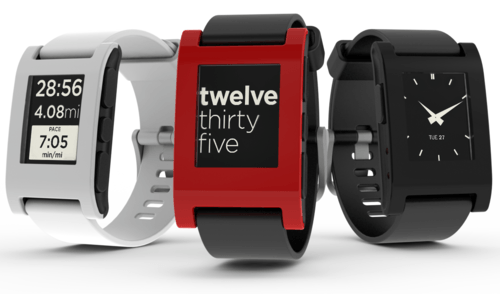
The smartwatch is about to do for wearable technology what the smartphone did for mobile tech, and Pebble is the company that’s leading the charge. Launched from the most successful Kickstarter project ever, Pebble is shaping how people everywhere will use and interact with wearable technology, and they’re taking that responsibility very seriously.
Pebble relies heavily on analytics and data science to monitor and fine-tune not only the performance of their smartwatch product, but also to track the growth of their business. That’s why they decided to use Keen IO for their multitude of analytics needs.
“As a rapidly growing wearables company in a new space, we need very customizable analytics to connect software and hardware interactions with user experience. Keen IO’s platform gives our data team the flexibility, scale, and future-proofness we need to gain critical insights. We get to focus on metrics and data science, because we’re abstracted away from the headaches of maintenance around streaming big-data.”
– Benjamin Bryant, Analytics Lead at Pebble
Pebble uses Keen IO to incorporate customized event tracking in and around virtually every touchpoint of the Pebble experience. Event data, indexed with rich information, is recorded along with purchases on the website, engagement within the Pebble mobile app, and throughout interactions with the smartwatch itself. These events are streamed from these various sources over the cloud and into Keen IO’s massively scalable event databases, all using Keen IO’s powerful data collection API. For example, properties such as software configuration settings, firmware versions, mobile device characteristics, battery performance and app/device crash metrics are recorded as property values each time the user interacts with the device.
Pebble’s data team then uses this data within custom dashboards they’ve built on top of Keen IO’s analysis API, allowing their product, marketing, business, and engineering teams to visualize metrics of how users buy, receive, configure, and utilize their products.
Beyond these dashboards, however, the Pebble team can also extract their raw event data from Keen IO and dive deeper to discover new insights into their technology, their app platform, and their business. Easily accessing this raw data was actually a key reason Pebble chose Keen IO to solve their analytics problems.
What Pebble Tracks Using Keen IO:
#1 — Watch Usage
Pebble needs to understand how users are interacting with the Pebble watch itself, including how often customers use the product, what they’re using it for, and to what extent they’re integrating the watch into their daily activities.
Pebble uses Keen IO to answer questions like:
- Are users properly setting up and configuring their watches, or is the process confusing to them?
- How many unique users are actively using their watches on a regular basis?
- How many hours is each watch connected to a user’s phone per day?
- Which features on the watch are being used most? How frequently?
- Which features are NOT being used on the watch, and why?
- How is the Pebble mobile app behaving with various user configurations?
#2 — The Purchase Process
Data collection is embedded into Pebble’s e-commerce website to track both pageviews as well as actual purchases. By monitoring this data, Pebble gains a better understanding of what actually influences users to purchase the product, facilitating a better connection with their user base in the future.
Pebble uses Keen IO to answer questions like:
- How much activity is the website experiencing at any given point in time?
- Where is that activity coming from? Which ads and campaigns are most effective?
- How effective is the ordering and shipping process? Which processes could be streamlined or improved?
- How do marketing events impact cohorts of e-commerce purchases?
#3 — The Pebble App Developer Platform
Developers can build an infinite variety of downloadable apps for the Pebble watch — Keen IO helps Pebble track events from the CloudPebble Developer Platform, the Pebble Appstore, and the apps themselves.
Pebble and Pebble app developers use Keen IO to answer questions like:
- How are users engaging with my app?
- What does the developer activity on the platform look like?
- How are watch users interacting with the Appstore? Which apps are they engaged with most?
- How many apps were downloaded per user per week?
#4 — Errors and Crashes
Unexpected errors and crashes are always going to happen to some extent — with Keen IO, however, each exception becomes an opportunity to diagnose problems and further optimize the user experience.
Pebble uses Keen IO to answer questions like:
- What events were occurring right before the watch crashes?
- Which, if any specific configurations correlate with watch crashes?
- Which cohorts of watch users are experiencing crash errors, and why?
Of course, this is only a small portion of what Pebble uses Keen IO to track and measure — and what they plan to track and measure in the future. The opportunity — and the challenge — with IoT devices like Pebble watches is that there is such a wide variety of data that can (and should!) be gathered and analyzed.
The good news is, Keen IO was built with precisely this sort of flexibility in mind — we can help you gather exactly the gather data you’re looking for, from whatever source you need. If you’d like to learn more about how we might be able to help you out with your unique analytics needs, feel free to drop me a line at nick@keen.io.



